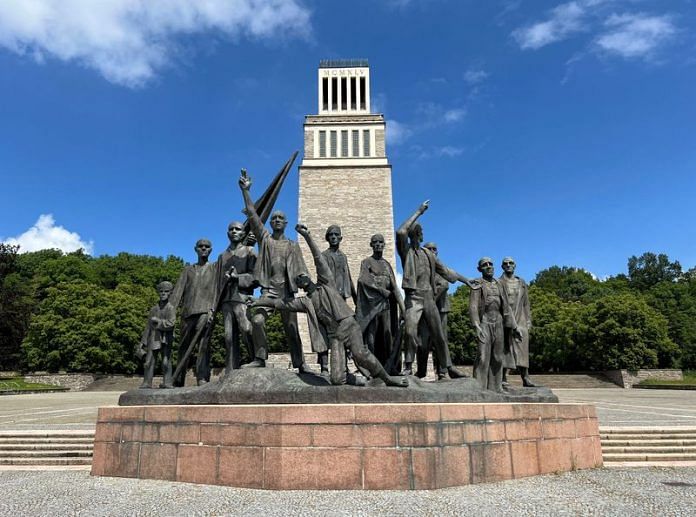By Lori Ewing
WEIMAR, Germany (Reuters) – For one afternoon every week, a privileged few prisoners held inside the electric fences of Buchenwald could find solace in playing football, a brief reprieve from the horrors of the largest Nazi concentration camp within Germany’s borders.
Euro 2024, which kicked off on June 14 in Germany, has been a chance to draw back the curtains on the dark parts of the country’s history through the nationwide “Football and Remembrance” programme, including the Buchenwald Memorial which highlights the links between the camp and the sport.
“For the SS, the games served to maintain the appearance of normality and conceal the criminal nature of the camp,” the Buchenwald exhibition said.
“For the (players) and spectators, the sport offered the opportunity to escape the daily camp routine and its dangers — if only briefly.”
Buchenwald sits atop Ettersberg hill, a 30-minute drive from the England team’s Euro training base and at the end of the winding and forested Blutstrase — Blood Road.
The words “Jedem Das Seine” — to give each his due — are carved on the wrought-iron entry gates. The clock above the gates is set at 3:15, the moment the camp was liberated by American soldiers on April 11, 1945.
The first football game, organised by the SS, was held on the roll call yard on Easter Sunday in 1939 with players split into “Jews” versus “Aryans”.
Football became a regular Sunday feature, with as many as 12 teams formed from those not too ill or weak from starvation and manual labour to play.
“Scoring a goal, making a save or arguing about an offside was the only way you could stop yourself from cracking up,” British soldier Ron Jones told the BBC of his time at the Auschwitz concentration camp.
Jones, who chronicled his experiences in “The Auschwitz Goalkeeper: A Prisoner of War’s True Story”, credited his fitness from playing football with saving his life during a gruelling death march.
Many top footballers were imprisoned at Buchenwald, as detailed in the exhibition, including Henrik Nadler and Eugene Maas.
Nadler, described by a French newspaper in 1923 as “a ball acrobat of the highest order” played for MTK Budapest and Hungary before he was arrested in 1944 and sent to Buchenwald.
Mas played 15 games for France, scoring 15 goals in 11 appearances, but a chest wound suffered in World War One forced his retirement. He was arrested for anti-German remarks in 1943.
More than 56,000 prisoners either died from starvation and poor conditions or were executed at Buchenwald.
(Reporting by Lori Ewing, editing by Ed Osmond)
Disclaimer: This report is auto generated from the Reuters news service. ThePrint holds no responsibilty for its content.



